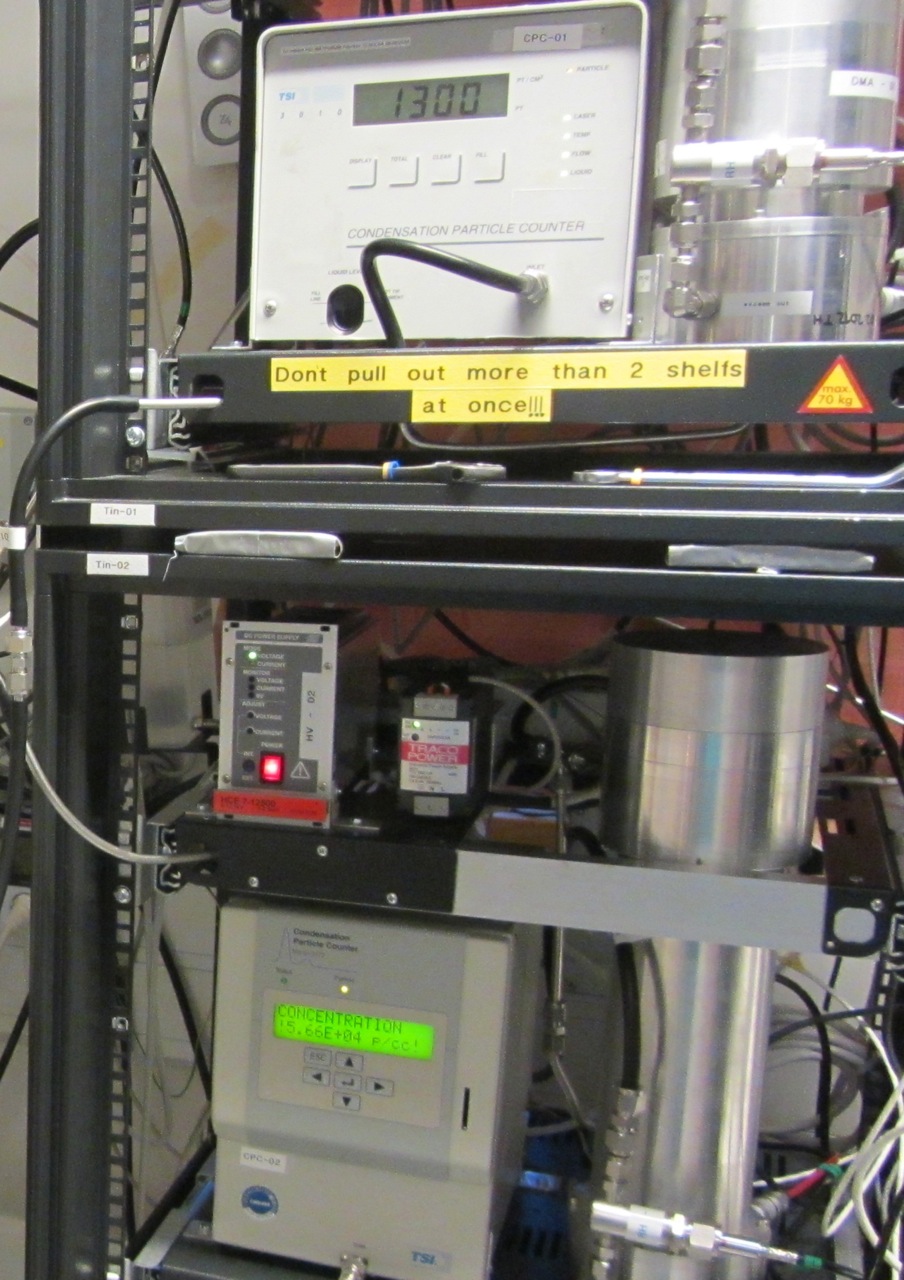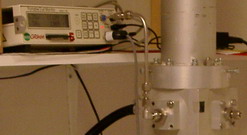Particle size distribution measurements
 The aerosol size distribution is measured using two custom built Hauke-type Differential Mobility Analyzers (DMA). The Differential Mobility Particle Sizer (DMPS) systems employs a closed loop sheath air circulation. The sample aerosol passes a 63Ni radioactive source that yields an equilibrium charge distribution before entering a DMA. The sample flow is 1 L min-1 and the sheath airflow is 5 L min-1. System 1 counts the aerosol particles using a TSI 3010 CPC run at a lower condesation temperature to bring the smallest size down to 6 nm. System 2 uses a TSI 3772. Together the DMA systems, operated in stepwise mode, provides one size distribution every second minute in 32 size classes between 5 and 200 nm in diameter. The aerosol size distribution is measured using two custom built Hauke-type Differential Mobility Analyzers (DMA). The Differential Mobility Particle Sizer (DMPS) systems employs a closed loop sheath air circulation. The sample aerosol passes a 63Ni radioactive source that yields an equilibrium charge distribution before entering a DMA. The sample flow is 1 L min-1 and the sheath airflow is 5 L min-1. System 1 counts the aerosol particles using a TSI 3010 CPC run at a lower condesation temperature to bring the smallest size down to 6 nm. System 2 uses a TSI 3772. Together the DMA systems, operated in stepwise mode, provides one size distribution every second minute in 32 size classes between 5 and 200 nm in diameter.

For the larger aerosols an Optical Particle Counter (OPC) made by GRIMM GmbH measures the aerosol size distribution between 0.2 and 2.2 µm in diameter. Data is stored once every two minutes (instrument currently not at the station).
The typical size of aerosol particles changes over the year. During winter and spring the particles are fairly large and the main mode is located well into the accumulation size range. In the summer the main mode has moved into the Aitken and occasionally even the ultra-fine size range.
Over long periods of the year there are very few large particles in the atmosphere. The main exception is the spring period when large amounts of aged pollutants reach the Arctic, often termed Arctic Haze. Local wind blown dust and sea spray also act as a source of micron sizes particles
|